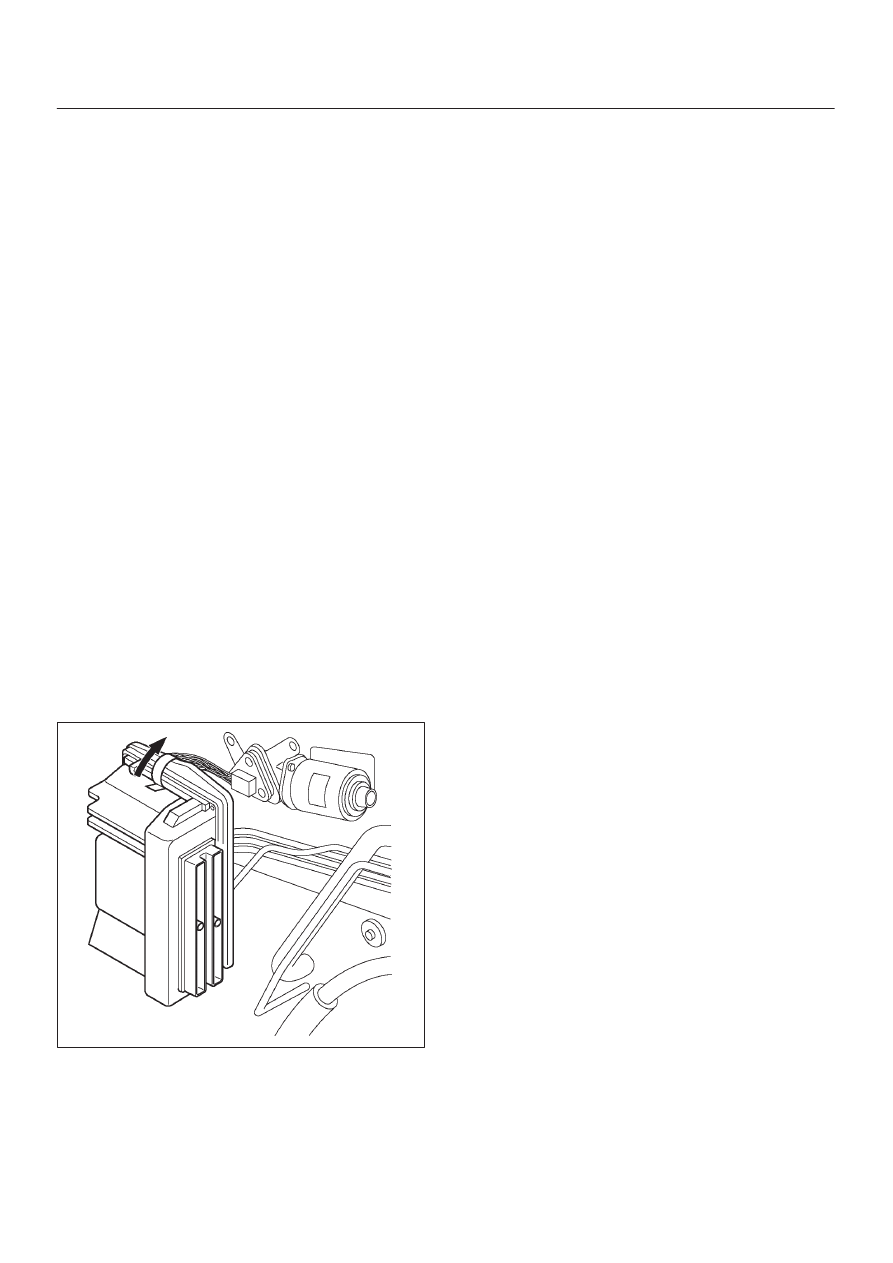Isuzu Amigo / Axiom / Trooper / Rodeo / VehiCross. Manual - part 883

6E–556
TROOPER 6VE1 3.5L ENGINE DRIVEABILITY AND EMISSIONS
Powertrain Control Module (PCM)
The powertrain control module (PCM) is located in the
passenger compartment below the center console. The
PCM controls the following:
D
Fuel metering system.
D
Transmission shifting (automatic transmission only).
D
Ignition timing.
D
On-board diagnostics for powertrain functions.
The PCM constantly observes the information from
various sensors. The PCM controls the systems that
affect vehicle performance. The PCM performs the
diagnostic function of the system. It can recognize
operational problems, alert the driver through the MIL
(Check Engine lamp), and store diagnostic trouble codes
(DTCs). DTCs identify the problem areas to aid the
technician in making repairs.
PCM Function
The PCM supplies either 5 or 12 volts to power various
sensors or switches. The power is supplied through
resistances in the PCM which are so high in value that a
test light will not light when connected to the circuit. In
some cases, even an ordinary shop voltmeter will not give
an accurate reading because its resistance is too low.
Therefore, a digital voltmeter with at least 10 megohms
input impedance is required to ensure accurate voltage
readings. Tool J 39200 meets this requirement. The PCM
controls output circuits such as the injectors, fan relays,
etc., by controlling the ground or the power feed circuit
through transistors or through either of the following two
devices:
D
Output Driver Module (ODM)
D
Quad Driver Module (QDM)
060RY00026
PCM Components
The PCM is designed to maintain exhaust emission levels
to government mandated standards while providing
excellent driveability and fuel efficiency. The PCM
monitors numerous engine and vehicle functions via
electronic sensors such as the throttle position (TP)
sensor, heated oxygen sensor (HO2S), and vehicle
speed sensor (VSS). The PCM also controls certain
engine operations through the following:
D
Fuel injector control
D
Ignition control module
D
ION sensing module
D
Automatic transmission shift functions
D
Cruise control
D
Evaporative emission (EVAP) purge
D
A/C clutch control
PCM Voltage Description
The PCM supplies a buffered voltage to various switches
and sensors. It can do this because resistance in the
PCM is so high in value that a test light may not illuminate
when connected to the circuit. An ordinary shop
voltmeter may not give an accurate reading because the
voltmeter input impedance is too low. Use a 10-megohm
input impedance digital voltmeter (such as J 39200) to
assure accurate voltage readings.
The input/output devices in the PCM include
analog-to-digital converters, signal buffers, counters,
and special drivers. The PCM controls most components
with electronic switches which complete a ground circuit
when turned “ON.” These switches are arranged in
groups of 4 and 7, called either a surface-mounted quad
driver module (QDM), which can independently control up
to 4 output terminals, or QDMs which can independently
control up to 7 outputs. Not all outputs are always used.
PCM Input/Outputs
Inputs – Operating Conditions Read
D
Air Conditioning “ON” or “OFF”
D
Engine Coolant Temperature
D
Crankshaft Position
D
Exhaust Oxygen Content
D
Electronic Ignition
D
Manifold Absolute Pressure
D
Battery Voltage
D
Throttle Position
D
Vehicle Speed
D
Fuel Pump Voltage
D
Power Steering Pressure
D
Intake Air Temperature
D
Mass Air Flow
D
Engine Knock
D
Acceleration Position
Outputs – Systems Controlled
D
EVAP Canister Purge
D
Exhaust Gas Recirculation (EGR)
D
Ignition Control
D
Fuel Control
D
ION Sensing Module
D
Electric Fuel Pump
D
Air Conditioning